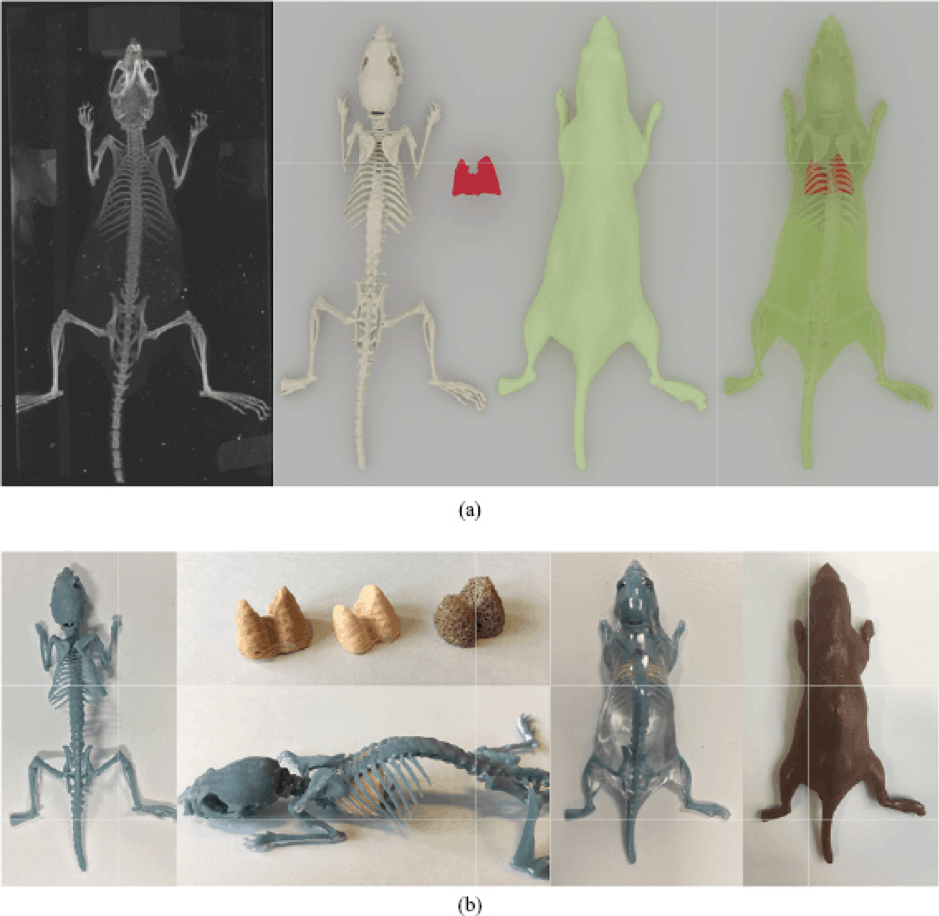
Dosimety radiobiology experiemtns have long needed a viable and realistic mouse phantom. In their paper “Technical Note: Manufacturing of a realistic mouse phantom for dosimetry of radiobiology experiments.” Esplen N, Alyaqoub E & Bazalova-Carter M aim to design a realistic mouse phantom for accurate dosimetry experiments.
A subcutaneous tumor-bearing mouse was scanned in the microCT scanner, Xstrahl SARRP, its organs manually segmented and contoured. The resulting geometries were converted into a stereolithographic file format (STL) and sent to a multimaterial 3D printer. The phantom was split into two parts to allow for lung excavation and 3D-printed with an acrylic-like material and consisted of the main body (mass density ρ=1.18 g/cm3 ) and bone (ρ=1.20 g/cm3 ). The excavated lungs were filled with polystyrene (ρ=0.32 g/cm3 ). Three cavities were excavated to allow the placement of a 1-mm diameter plastic scintillator dosimeter (PSD) in the brain, the center of the body and a subcutaneous tumor. Additionally, a laser-cut Gafchromic film can be placed in between the two phantom parts for 2D dosimetric evaluation. The expected differences in dose deposition between mouse tissues and the mouse phantom for a 220-kVp beam delivered by the small animal radiation research platform (SARRP) were calculated by Monte Carlo (MC).
MicroCT scans of the phantom showed excellent material uniformity and confirmed the material densities given by the manufacturer. MC dose calculations revealed that the dose measured by tissue-equivalent dosimeters inserted into the phantom in the brain, abdomen, and subcutaneous tumor would be underestimated by 3-5%, which is deemed to be an acceptable error assuming the proposed 5% accuracy of radiobiological experiments.
The low-cost mouse phantom can be easily manufactured and, after a careful dosimetric characterization, may serve as a useful tool for dose verification in a range of radiobiology experiments.
This Xstrahl In Action was adapted from an article found on a National Library of Medicine website.
SARRP Research Spotlight: Dr. George Wilson
George Wilson, PhD, Chief, Radiation Biology, William Beaumont Hospital Radiation Biology focuses on translational research in the areas of new treatments, combined modalities, and stem cell biology. The group has a heavy emphasis on incorporating molecular,...






